A Look Inside NYC’s Supervised Drug-Injection Sites, The First In The Nation
Dec. 17, 2021, 6:40 a.m.
The New York City centers in Harlem and Washington Heights are already saving lives, intervening in 43 overdoses during their first two weeks of operation.
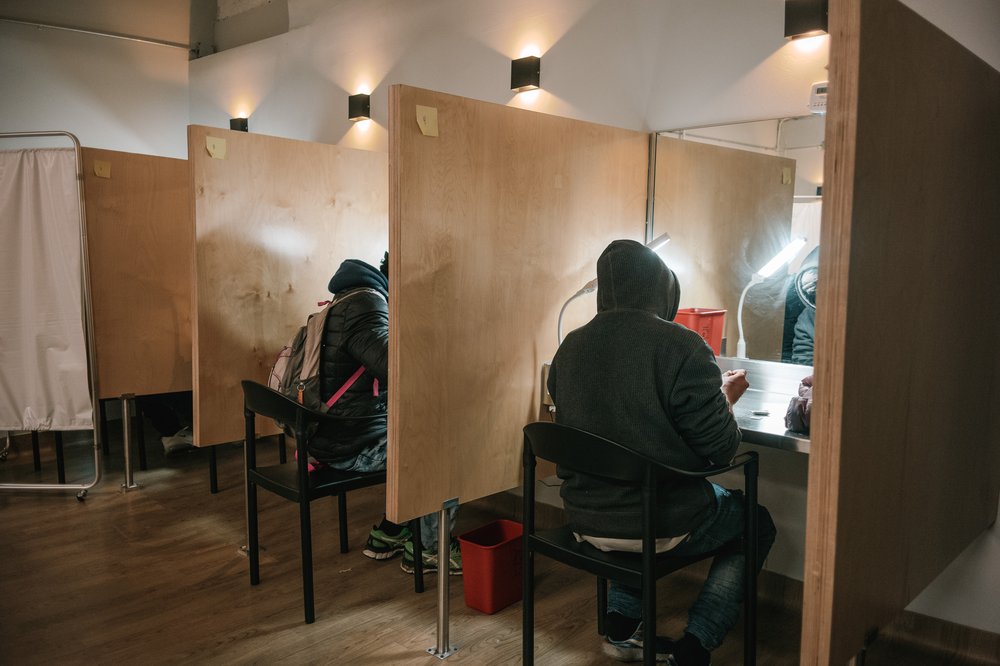
At 3 p.m. on Wednesday afternoon, the drop-in center at New York Harm Reduction Educators’ East Harlem site was bustling. A few people lingered at the back of the room, asking a staffer when it would be their turn to go into a closed-off area where they could use drugs such as heroin or cocaine under staff supervision. Others were hanging out watching TV, socializing or getting some rest on one of the plush yellow chairs that lined the space.
“This is people’s living room. We work with a lot of people who are street-entrenched and homeless and don’t have any place to be,” said Kailin See, senior director of programs at OnPoint NYC. The nonprofit recently gained national attention for opening the country’s first two overdose prevention centers – one here in Harlem and another at the Corner Project in Washington Heights.
Both locations have long provided clean syringes, harm reduction counseling, HIV testing and other services to people who use drugs. It wasn’t until November 30th that they got the green light from Mayor Bill de Blasio to openly allow supervised substance use onsite. The primary purpose of the new centers is to save lives by having someone on hand to intervene with a variety of treatments when an overdose occurs.
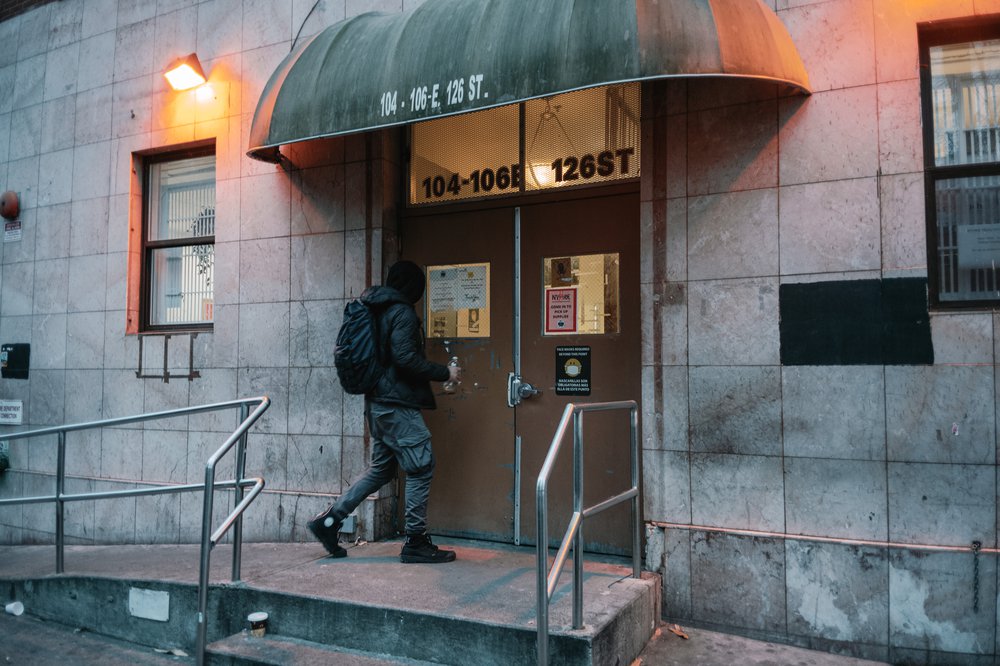
But visitors also view it as a safe space. Ronnie, a client at the Harlem overdose prevention center who is homeless, said before the site opened, he would inject his preferred mix of cocaine and heroin “everywhere and anywhere.”
“Now, I only do it here when I can,” said Ronnie, who asked to use a pseudonym to protect his privacy.
He said he has overdosed five times before. “I do want to clean up my life because I don't want to die,” he said.
The mayor had been pushing for this pilot program since 2018, and its arrival comes as New York City faces record rates of drug overdose fatalities during the pandemic. Last year, the city recorded 30 drug overdose deaths for every 100,000 residents – more than three times the tally from 20 years ago.
The facilities have faced pushback from some politicians and local community groups. But during their first two weeks of operation, they have already started to yield results. As of Tuesday evening, they had registered more than 350 participants, and staff at the centers had reversed 43 overdoses.
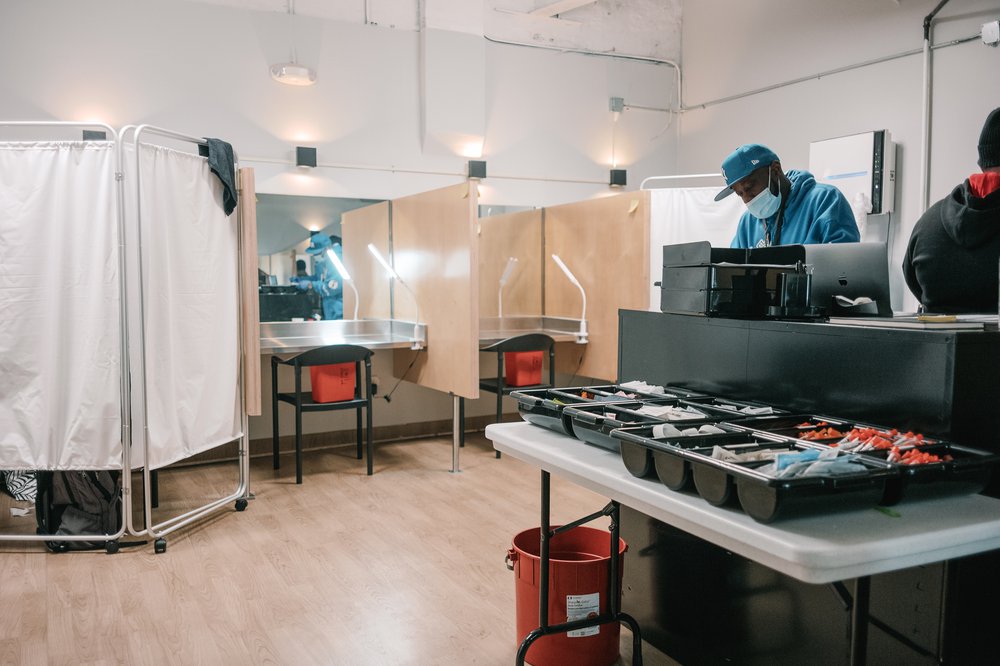
Organizers said they didn’t once call 911 or send anyone to the emergency room, avoiding potentially costly medical care. In most cases, they didn’t even have to pull out naloxone, the nasal spray typically used to reverse an opioid overdose. Taking too much heroin or other opioids can cause the brain stem to depress breathing, which, if noticed early, can be remedied with a simple oxygen tank.
“Because we are there the minute, the second the substance hits the system, we're able to prevent the loss of consciousness, usually with just oxygen,” See explained as she took WNYC/Gothamist on a tour of the Harlem facility. In the handful of instances where naloxone was used, it was a “microdose” of the medication, which See said is easier on the body.
Visitors have to bring their own drugs, but they can get clean syringes and other paraphernalia onsite. Clients who inject drugs are particularly fond of the sterile hot towels that are provided to “promote vein health and really bring those veins up,” See said. The overdose prevention room itself has eight booths sectioned off with partitions where people can use their drug of choice, as well as more private screened-off areas. The center is also setting up a separate smoking room.
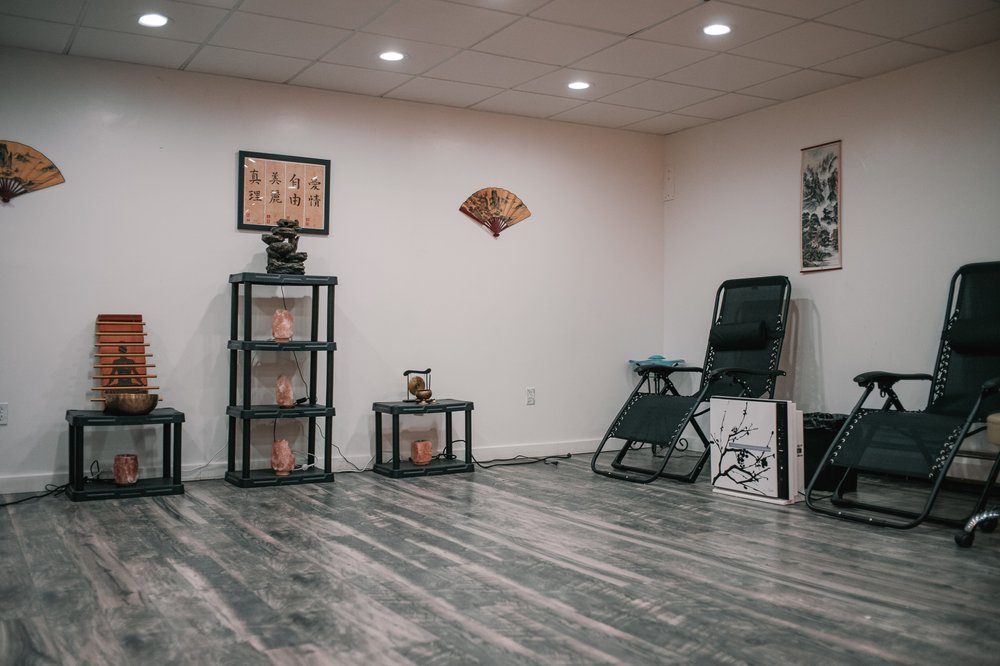
Although overdose prevention centers are often called “supervised injection sites” these facilities don’t discriminate against other methods of consuming drugs, and all types of drugs are allowed.
“These sites acknowledge the reality that fentanyl [a synthetic opioid about 50 to 100 times more potent than heroin] is in the entire drug supply, and even if it isn't, there's still a chance of overdose with other substances,” said See.
Still, people have to meet certain criteria to participate, including long-term drug dependence.
Creating A Blueprint
Sam Rivera, executive director of OnPoint NYC, says since the new overdose prevention centers were announced, he has been getting non-stop calls from people at organizations around the country that want to replicate the model.
“I just got a text from [a group in] San Francisco showing me photos of their setup and how they're preparing to do it,” Rivera said during an interview in his office at the Harlem site on Wednesday. “I'm on the phone every day, including Saturday and Sunday, with someone from somewhere in the country saying, ‘We're next,’ and I'm cheering them on.”
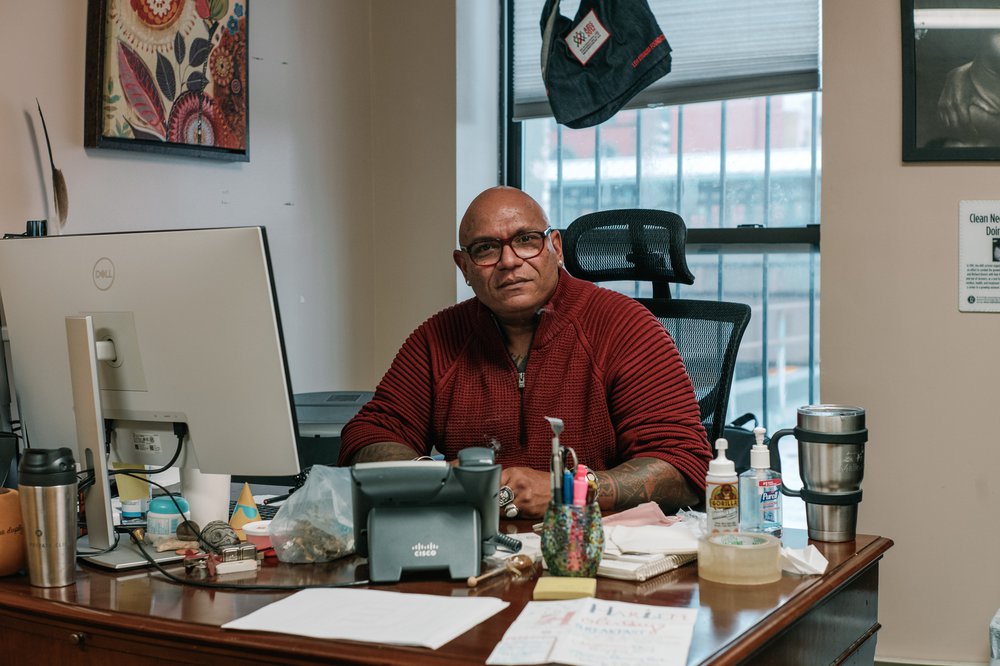
The Biden administration has not taken a public position on overdose prevention centers, which are considered illegal under the federal “crack house statute." It prohibits people from providing space for illegal drug use. But if the sites can operate in New York City without facing a crackdown from federal prosecutors, it could clear the way for organizations in other cities to open their own facilities.
According to See, part of the purpose of opening two locations is to implement slightly different models at each one and work with researchers to evaluate how they compare. “The objective here is to essentially hand over a blueprint to the rest of the country to support the standing up of these sites in other jurisdictions,” she said.
New York Harm Reduction Educators uses a medical model that keeps a registered nurse and care coordinator on hand, while the Corner Project in Washington Heights is mostly staffed by “peers,” who are often active drug users themselves. Non-clinical staff are trained to use the same techniques a clinician would to prevent and reverse overdoses, See said.
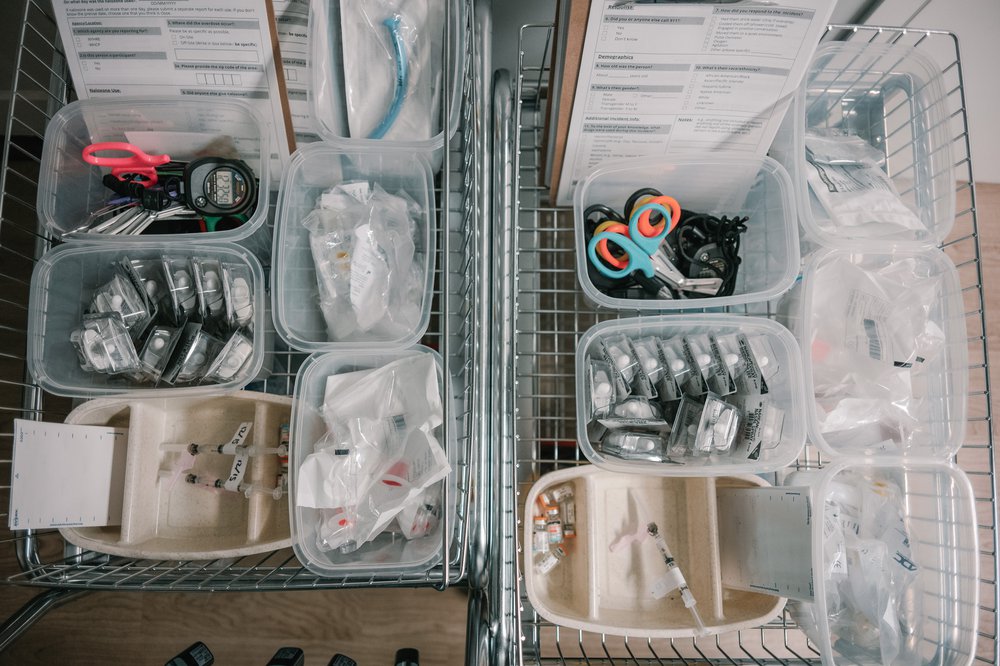
She added that the peer model is likely to make clients feel more at ease, which could lead to a better retention rate.
“Some participants [in Washington Heights] have said to us early on, ‘I just feel safe here and I know I'm not going to get judged here. If I go to treatment and it doesn't work out and I come back, the staff aren't going to look at me like I failed,’” See said.
But she noted that having a clinician “literally boothside” in Harlem could make it easier for people to engage in the treatment for substance use and other needed medical care.
Weathering The Backlash
Not everyone is excited about the new centers. U.S. Rep. Nicole Malliotakis, a Republican who represents parts of South Brooklyn and Staten Island, has introduced a bill in Congress that would prohibit organizations that operate overdose prevention centers from receiving any federal funding, including for unrelated services.
“I'm opposed to the heroin injection sites because I believe it is only encouraging and enabling people who have this addiction and it's not doing anything to actually help them,” Malliotakis told WNYC/Gothamist.
She also recently sent a letter to U.S. Attorney General Merrick Garland, urging the Department of Justice to crack down on New York City’s two centers – after de Blasio and other mayors wrote to Garland earlier this year asking him to issue a statement saying enforcing the law against these sites would not be a priority.
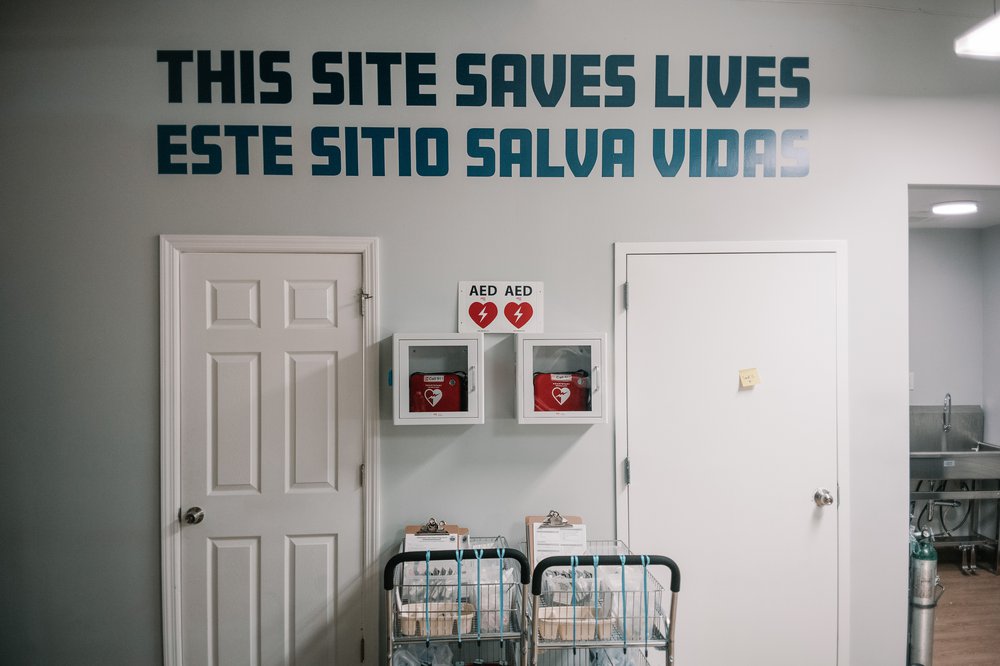
In Harlem, community members, including the leaders of several tenant organizations, rallied last week alongside Rev. Al Sharpton and U.S. Rep. Adriano Espaillat to protest the arrival of the overdose prevention center on East 126th Street. For the most part, protesters said they were supportive of the concept of an overdose prevention center but that such services are often installed in their neighborhood rather than equitably distributing them around the city.
Data show that Harlem methadone clinics serve mostly residents coming from other neighborhoods. Parts of Harlem and the Bronx have the highest rates of overdose deaths in the five boroughs, but overdoses have also spiked in other parts of the city with fewer services. Residents say drug dealers notice the concentration of services in Harlem and are more likely to set up shop there.
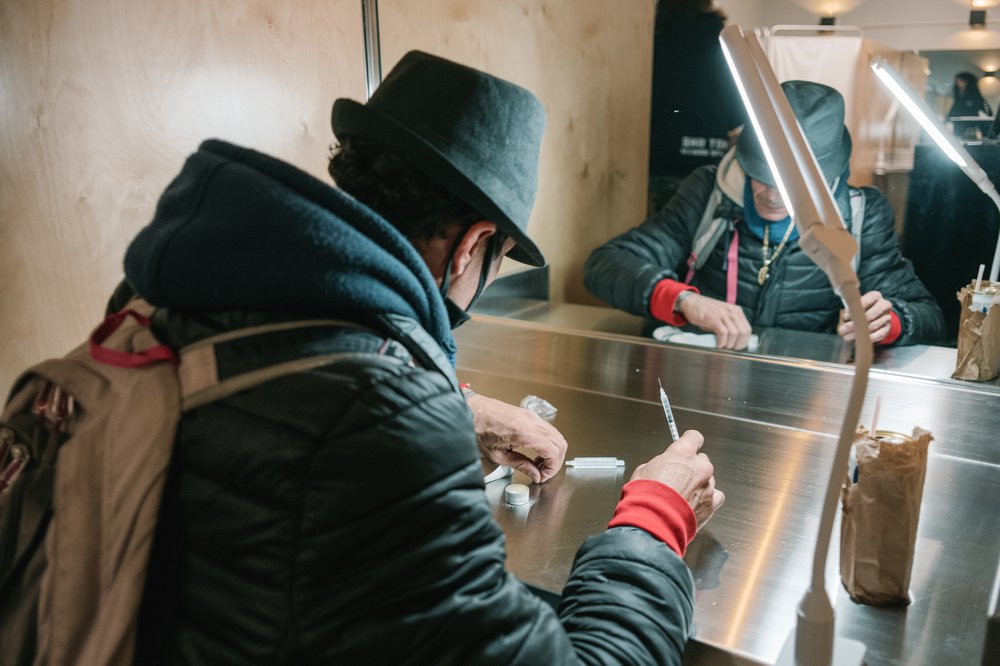
“I'm not against that needle program they put up,” James Ratti, who has lived in Harlem for nearly 40 years, said at the weekend rally. “If it's going to help somebody, we don't want to go against it. What we are going against is the people that it's bringing up here. The people who are coming up here to buy drugs, the people who are coming up here to hang out.”
Harm reduction advocates said there should be more overdose prevention centers throughout the city so people don’t have to travel far to get to them. Rivera also noted that the centers aim to prevent the kind of public drug use that his neighbors are worried about.
“We know that near both locations, people were using drugs in the community, wherever they can find a place,” Rivera said. “So, in bodega bathrooms and IHOP and other places, and unfortunately some of those locations had to deal with an overdose death.”

In the upstairs office of the Harlem site, the staff have erected a small Christmas tree on top of a stack of boxes containing used syringes, pipes, cookers, drug baggies, gauze and other hazardous waste collected during the centers’ first two weeks of operations.
This waste, See noted, could have otherwise ended up on the streets. “This is our early Christmas present to Harlem,” she said.